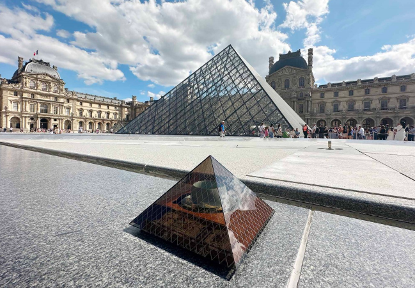
Reviving Ancient Splendor: The Olympic Spirit Meets Chinese Intangible Cultural Heritage
Share
From intricate craftsmanship and traditional Chinese medicine to solemn rituals and vibrant folk arts, intangible cultural heritages form a rich tapestry of Chinese identity, enriching various aspects of contemporary Chinese life. CNGM will guide readers through China's most celebrated traditions. For centuries, the essential elements of Chinese intangible cultural heritage have been passed down from masters to apprentices, generation after generation. Today, this ancestral wisdom is being revitalized by a new, creative generation of inheritors.
Chinese Ru Kiln master Li Kuchan once said, "No museum in the world would be complete without a piece of Ru ware." This sentiment became especially poignant after the world had the chance to appreciate the beauty of Ru Kiln during the recent Paris Olympic Games.
Weeks after the 2024 Olympic Fine Arts Exhibition in Paris in August, Li Keming—an inheritor of the intangible cultural heritage of Chinese Ru porcelain firing techniques—still recalls how international visitors marveled at the elegance of the Tianqing tea cup produced by the brand Rushanming, and how they admired the millennia-old Chinese cultural heritage reflected in his works.
"The concept of 'inheriting intangible cultural heritage: preserving the memory of intangible skills and refining specific techniques' shares similarities with the Olympic spirit of 'striving upward, moving forward, and never giving up,'" Li told the Global Times at his Beijing studio.
"My colleagues and I are working to unlock the key to exploring the numerous possibilities between the historical context and traditional roots of the ancient Ru Kiln," he added.
